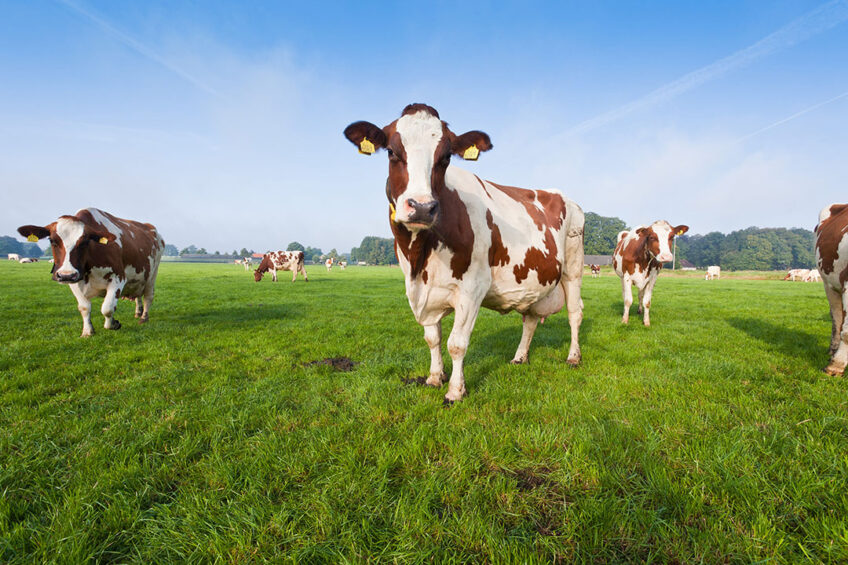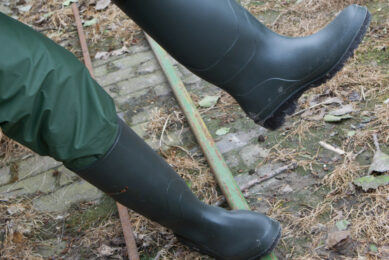Facial eczema: A cause for concern

Earlier this year there were 2 reports of clinical facial eczema outbreaks in the Australian region of Gippsland.
Experts expect that the prevalence of facial eczema in New Zealand and Australia may increase in the future, with global warming providing suitable conditions for widespread outbreaks of the disease over longer periods.
Hans van Wees, farmer from Maffra in Gippsland, Victoria, has seen the effects of the disease. “If you enjoy farming, the look of facial eczema is horrible,” he says.

Hans started farming in Gippsland in 2008. “It’s a seasonal dairy farm,” he explains. “We calve once a year.” He milks 880 crossbred cows on 200 hectares. Last year he produced 415,000 kilogrammes of milk solids with 840 cows. This year he aims to produce 435,000–440,000kg milk solids. He supplies the milk to Fonterra.
Hans emigrated from the Netherlands to New Zealand in 1979. He first studied agricultural science at Massey University in Auckland. After working as a share farmer for more than 10 years, he moved to Australia. Hans worked at 2 other farms before he ended up on his farm near Maffra, about 30 kilometres from Sale in Central Gippsland.

Outbreaks of facial eczema have been reported across Victoria in the past. But it has been seen mainly in east Gippsland. Facial eczema is caused by the toxin sporidesmin, which is produced by the spores of the fungus Pithomyces chartarum. The fungus grows in the dead litter at the base of pasture, and prefers warm moist conditions.
When ingested by cattle, sporidesmin damages the liver and bile ducts. The damaged liver cannot rid the body of waste and a breakdown product of chlorophyll builds up in the blood, causing sensitivity to sunlight, which in turn causes inflammation of the skin.
Zinc is protective against facial eczema
Zinc is protective against facial eczema. Dairy Australia explains that zinc prevents cell damage by forming an inactive complex with sporidesmin. It also inhibits intestinal absorption of copper which catalyses formation of the oxygen free radicals that cause the cell damage. Zinc supplements can therefore be effective for facial eczema control and prevention.
Spore counting on sentinel farms across Gippsland and the Bega Valley commences in January each year. If spore counts rise to dangerous levels, Dairy Australia issues an alert to dairy farmers in the affected regions to monitor their own pasture spore counts and commence feeding of zinc oxide supplements to their milking herds.
 7 findings: Rethinking sulfate sources of trace minerals
7 findings: Rethinking sulfate sources of trace minerals
Trouw Nutrition is sharing global research findings that show the source of trace mineral affects dairy cow performance.
Hans van Wees was one of the contributors to the report A Review of Facial Eczema, produced by Dairy Australia. He first experienced the effects of facial eczema in New Zealand, where he was share farming at the time. “In New Zealand they also have a monitoring system. They monitor the spore count and they warn you when to drench with zinc oxide to prevent the effects of the disease,” he says.
The system did not completely protect the herd of the farm where Hans was milking. “One year we had 3 or 4 cows with facial eczema,” he says. “They had sunburnt teeth and some skin falling off. So that was really bad. The best option is to prevent it, of course.”
Calves suffered liver damage after facial eczema
When Hans arrived in Australia, farmers were not really worried about facial eczema, he recalls. “They did not see it here then. Over the years we have had some high spore counts but we never had any problems with our dairy cows, thanks to using zinc oxide. We did have a problem with about 15 calves getting facial eczema. It was impossible to get rid of the toxin, so we minimised the intake of grass. We increased the uptake of supplements and also found some pastures with low spore counts.”
The calves with facial eczema ended up having liver damage and sunburn marks on their skin. “They recovered but seemed to be more prone to other problems a year later. Their liver was compromised. After that they did better,” Hans says.
 Humic acids for better ruminant health
Humic acids for better ruminant health
Here we look at the benefits that humic acids offer and their positive effect on health in ruminants.
He points out that farmers in New Zealand often give their cattle zinc bullets, 1 per animal. The bullets release a consistent daily dose of zinc oxide to protect animals against facial eczema for up to 4 weeks. “But we can’t use them in Australia,” Hans says. “They have not been passed by the Australian Veterinary Association.”
Hans explains that monitoring spore counts and weather conditions is an important tool for predicting periods of toxicity. “We usually get a warning if the spore counts are at a dangerous level. Then you can take action. We feed a zinc pellet in with the grain. We have done that for up to 120 days. In the last few years high spore counts occurred about every second year, usually late summer, early autumn.”
After 100 days of feeding zinc pellets, cows have to be tested. “We take blood samples and check the zinc levels, so we don’t get up to toxic levels,” Hans says. “Farmers have to be very careful and do their sums right. It is important to make sure of what the actual dose rate has to be in the feed. There are no short cuts.”
 Feeding the future: A sustainable approach to dairy farming
Feeding the future: A sustainable approach to dairy farming
What does the science say? What is the data telling us?
Critical dose needed to make it work
Hans says there have been too many stories of things going wrong. “Farmers can give too little or too much. If you overdose you get very sick cows. If you don’t give enough, it does not work. There is a critical dose that cows need to make it work. You have to do it properly or there could be effects for a whole generation of youngstock or young cows.”
Zinc is not expensive for farmers, Hans says. “And the damage to cows of facial eczema is horrendous. They lose skin, they don’t eat; some of them die. I have seen it and it is an animal nightmare to look at.” Hans is very vigilant in protecting his animals, by keeping a good eye on the spore counts.
According to the review by Dairy Australia, the prevalence of facial eczema in New Zealand and in Gippsland and other southern dairying regions of Australia may increase in the years to come as the effects of global warming may provide suitable conditions for more widespread outbreaks of the disease over longer periods.
Join 13,000+ subscribers
Subscribe to our newsletter to stay updated about all the need-to-know content in the dairy sector, two times a week.










